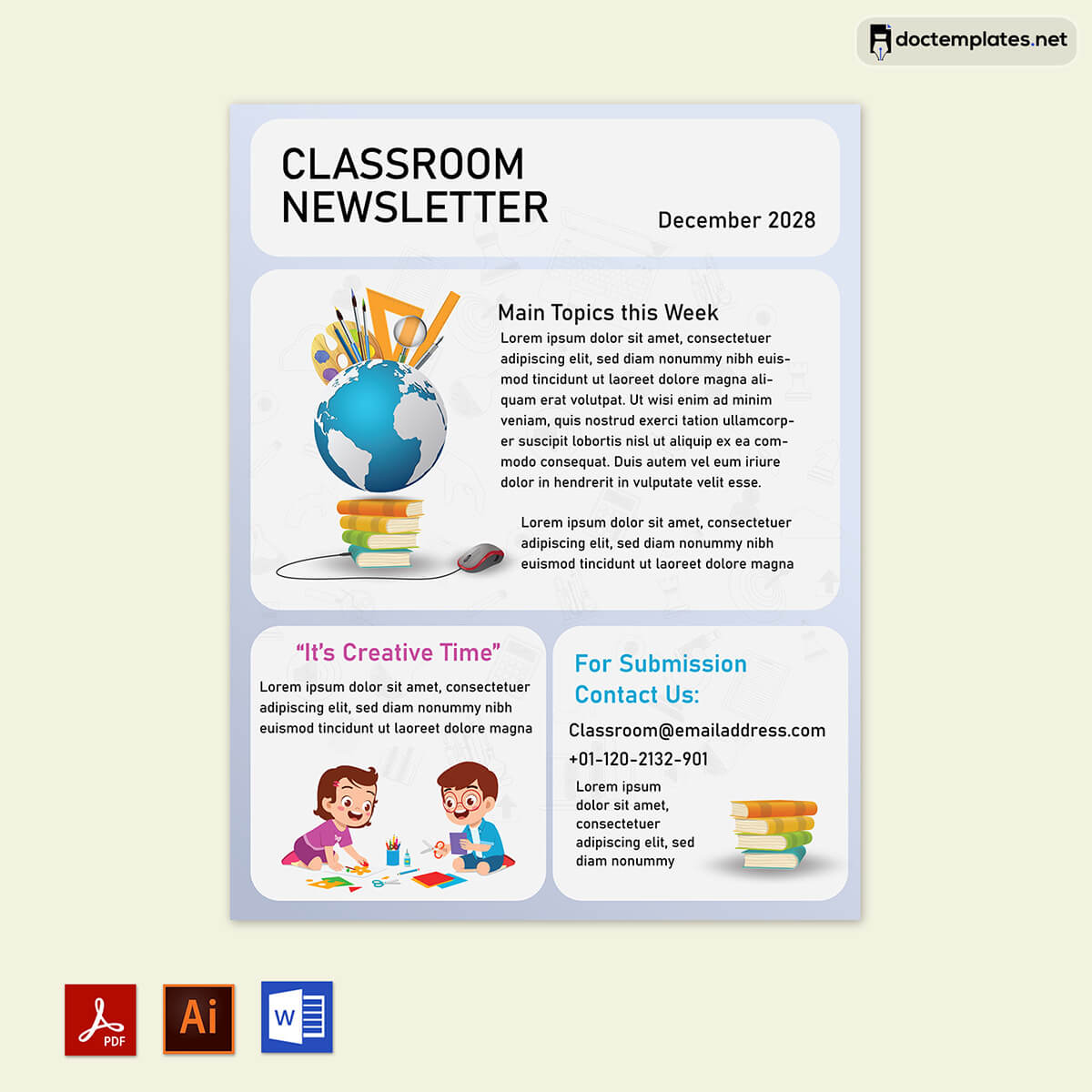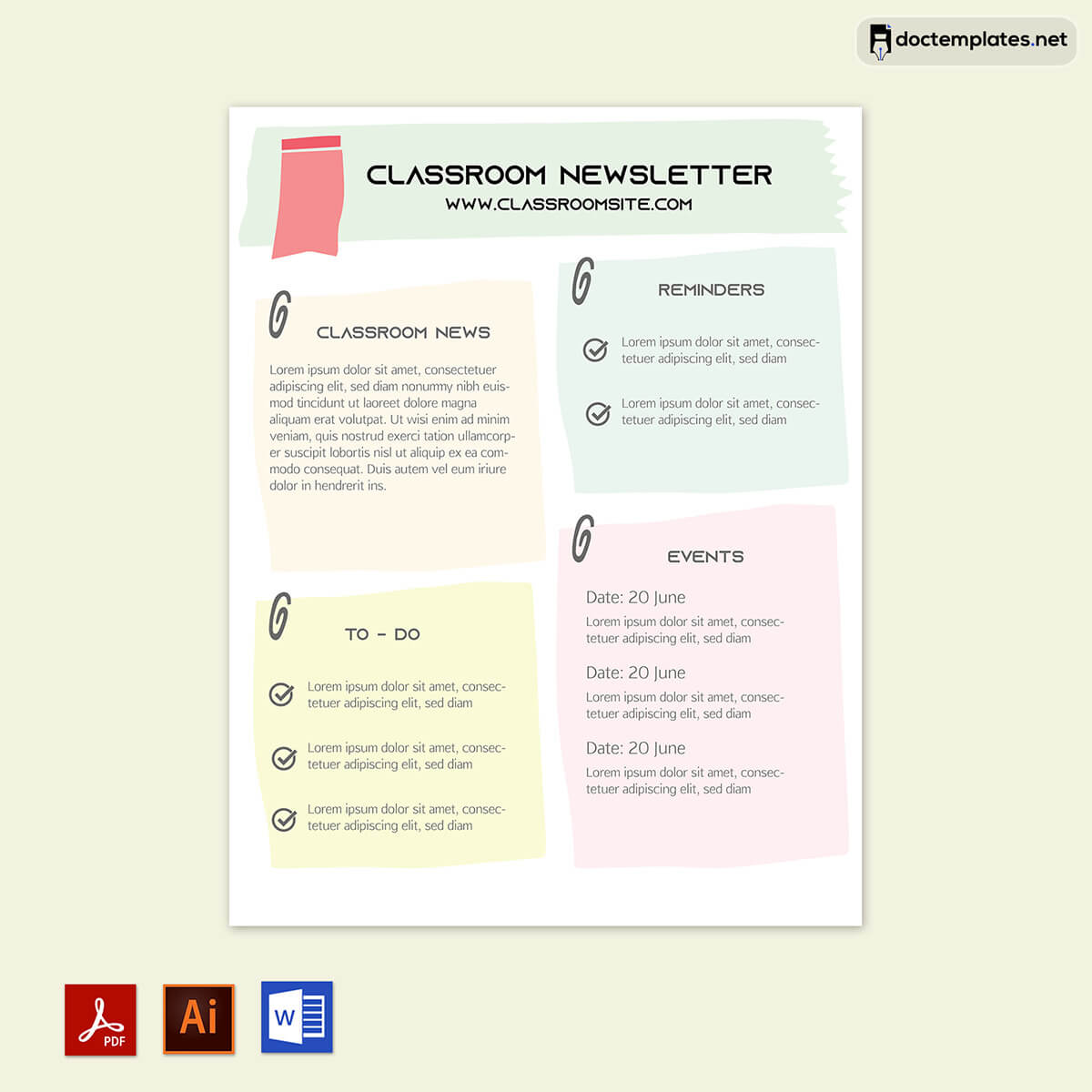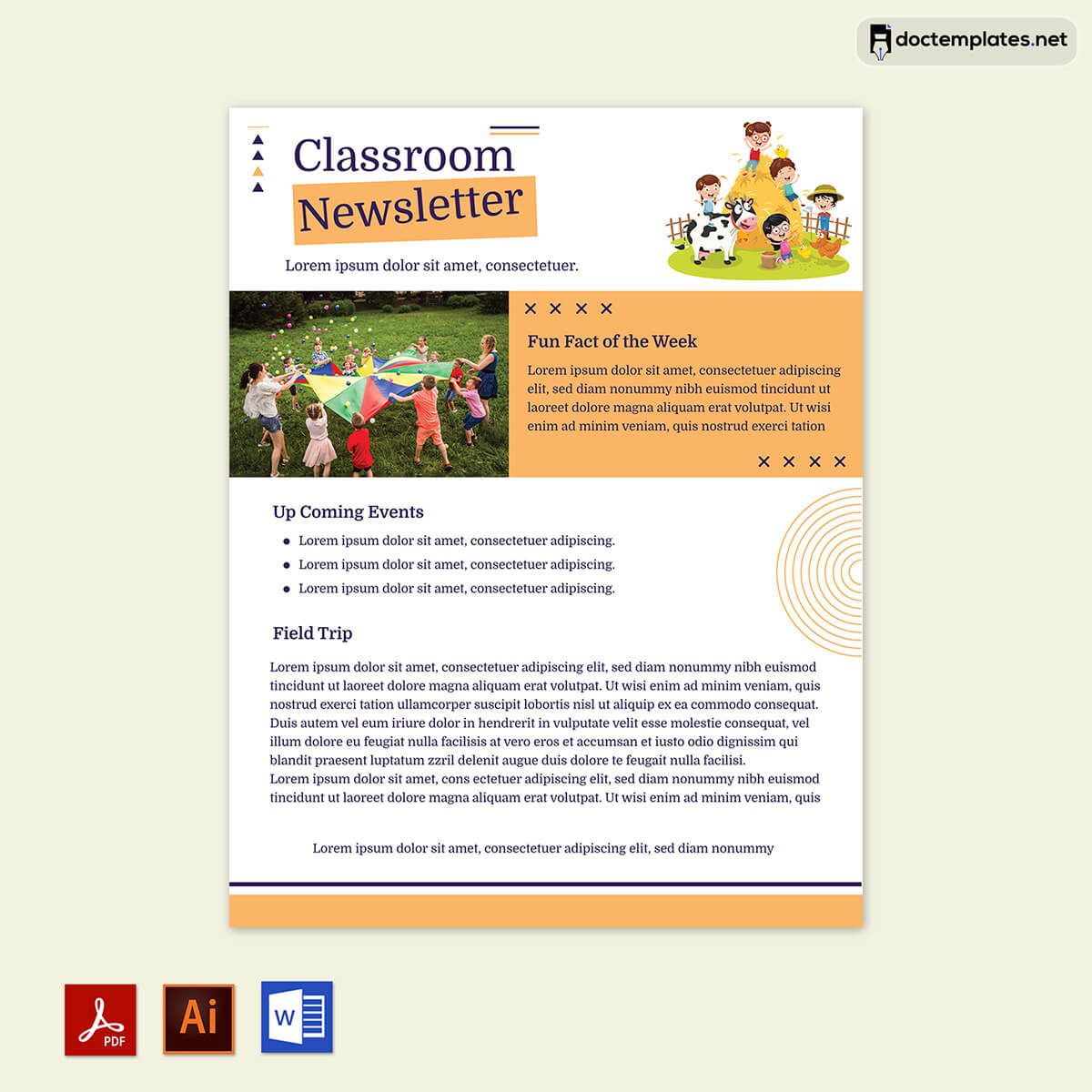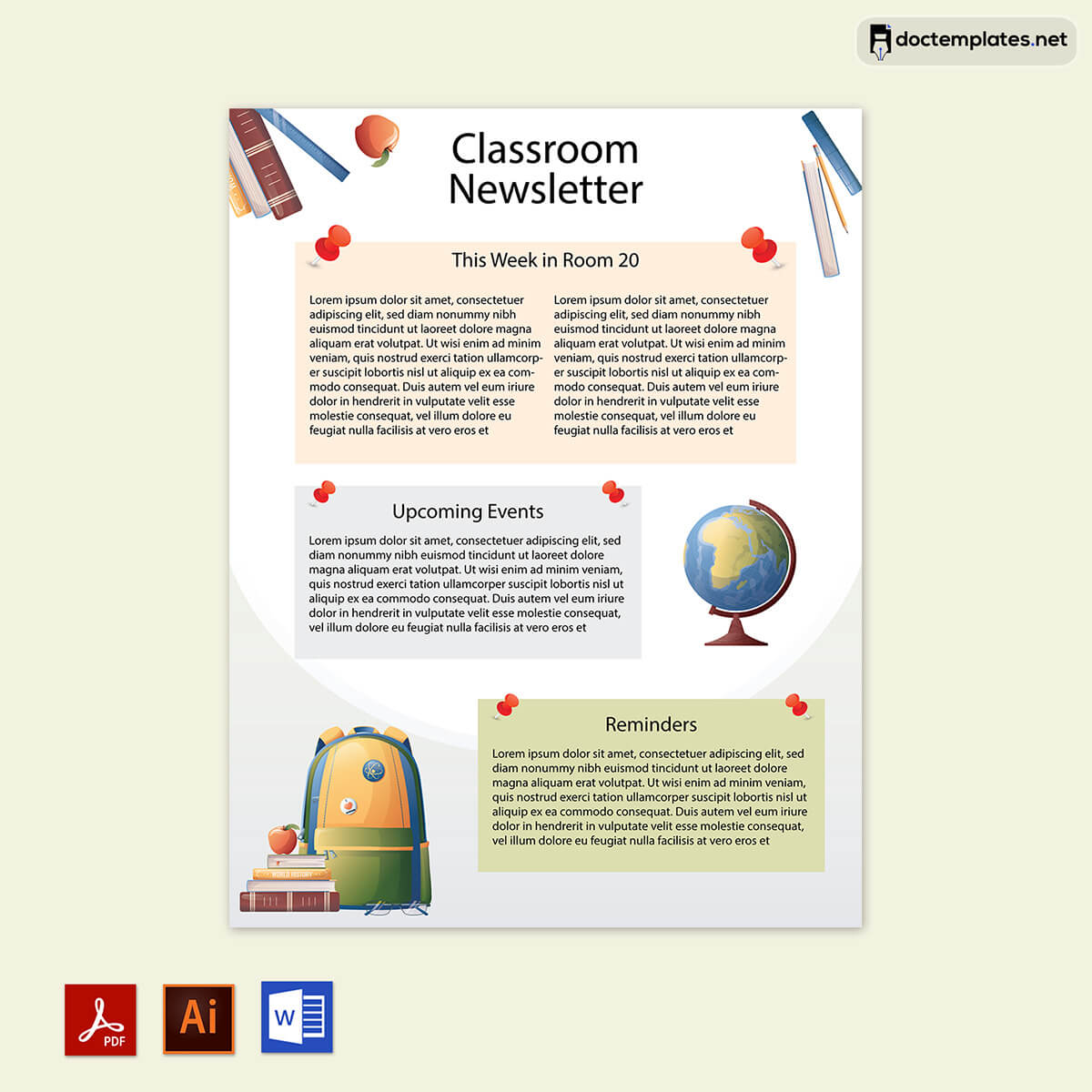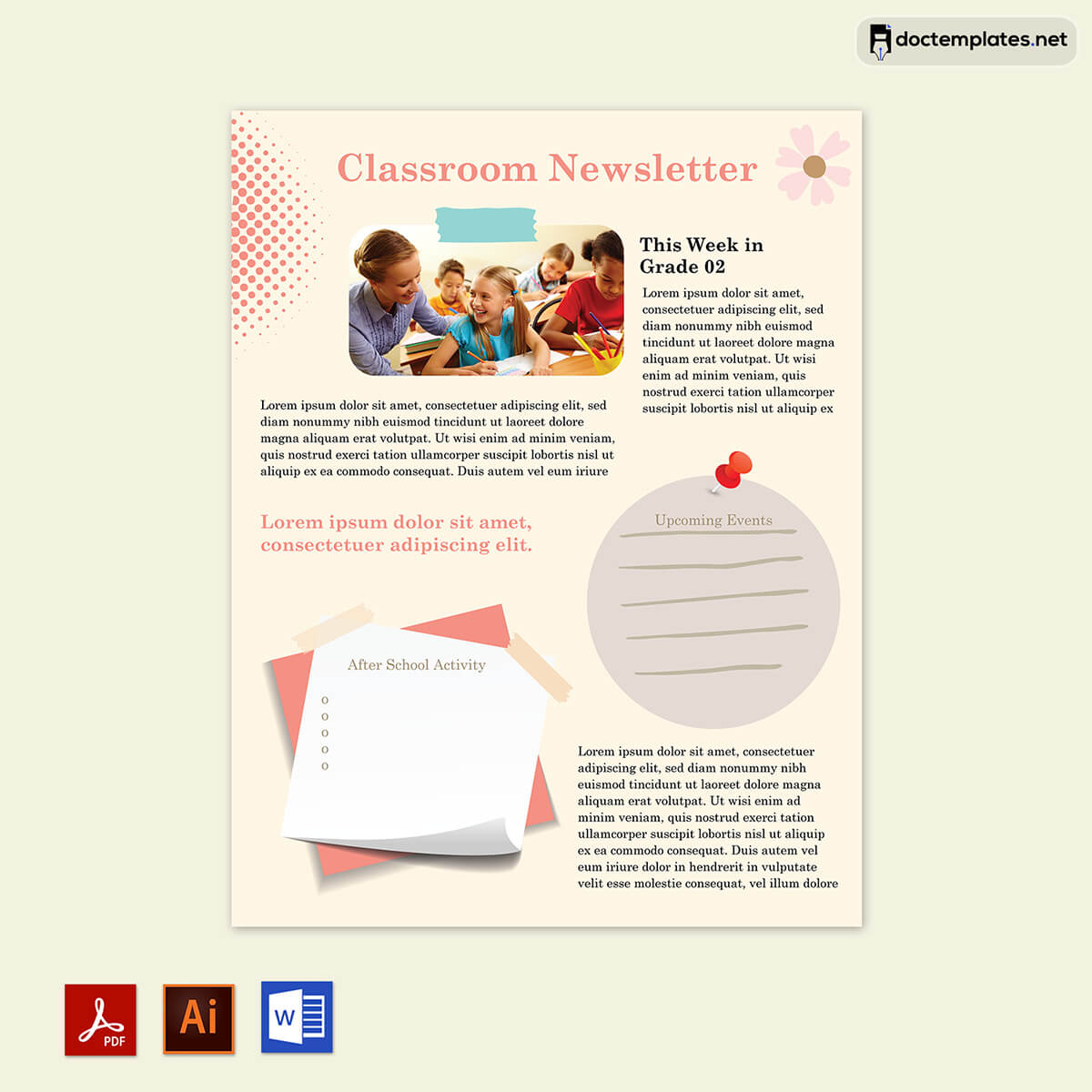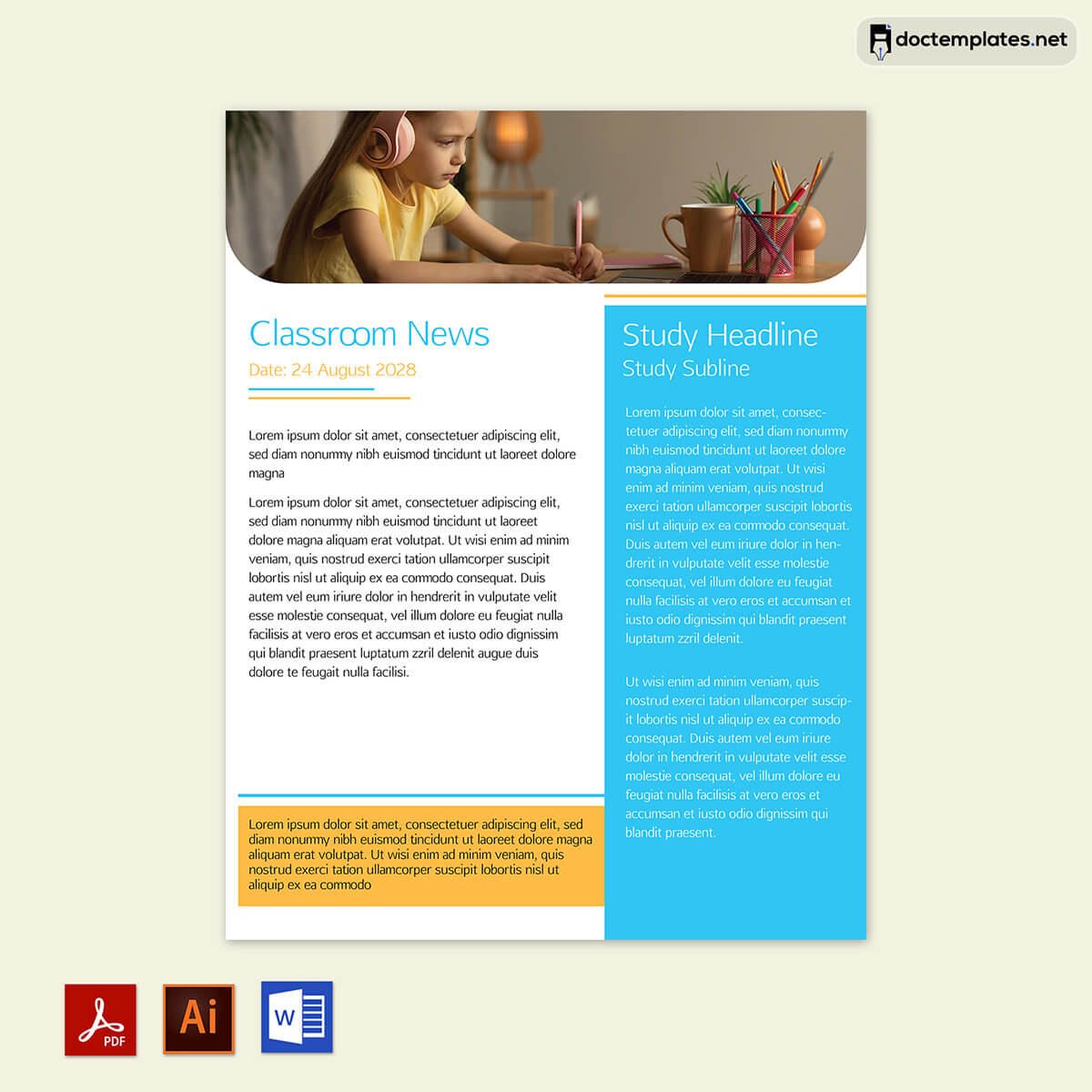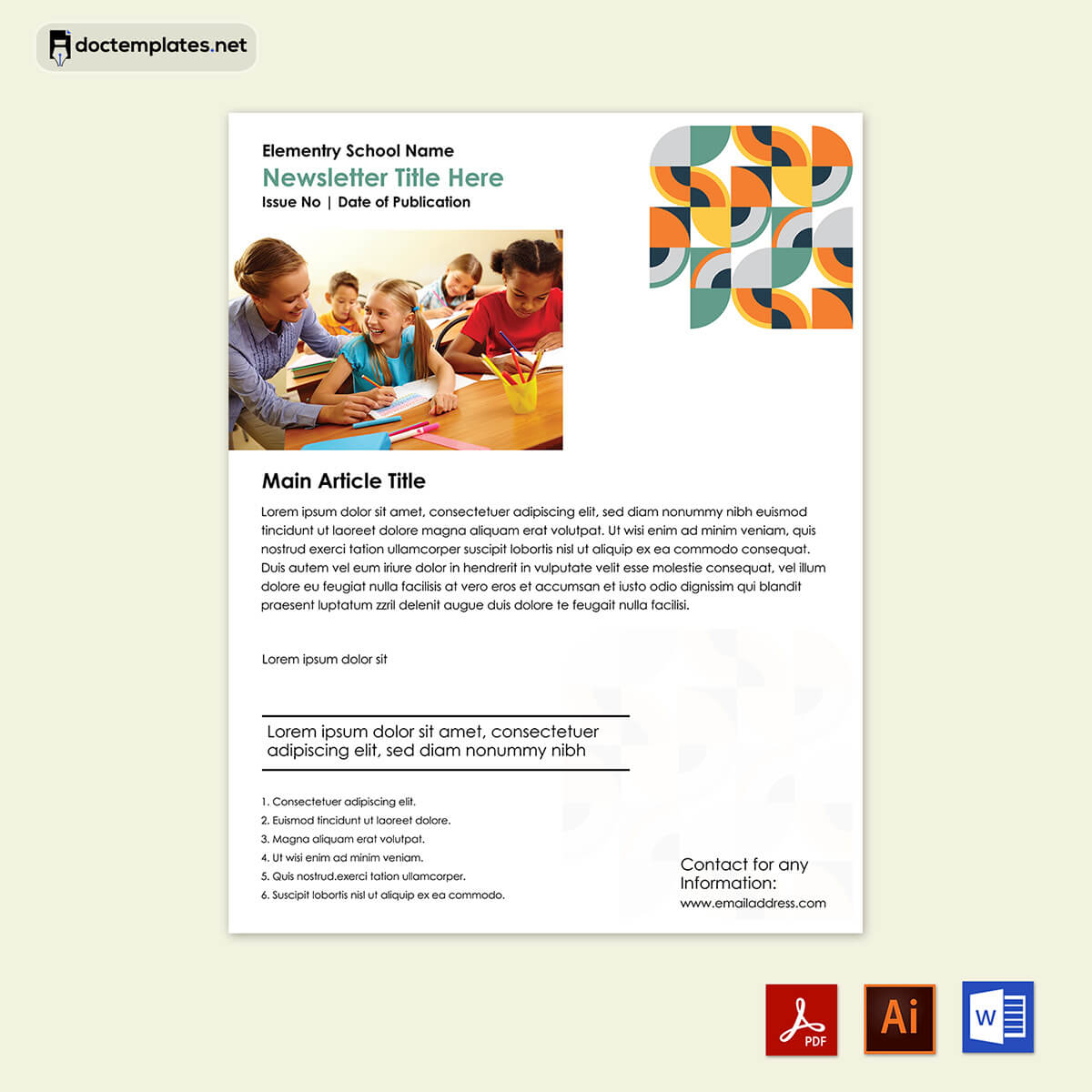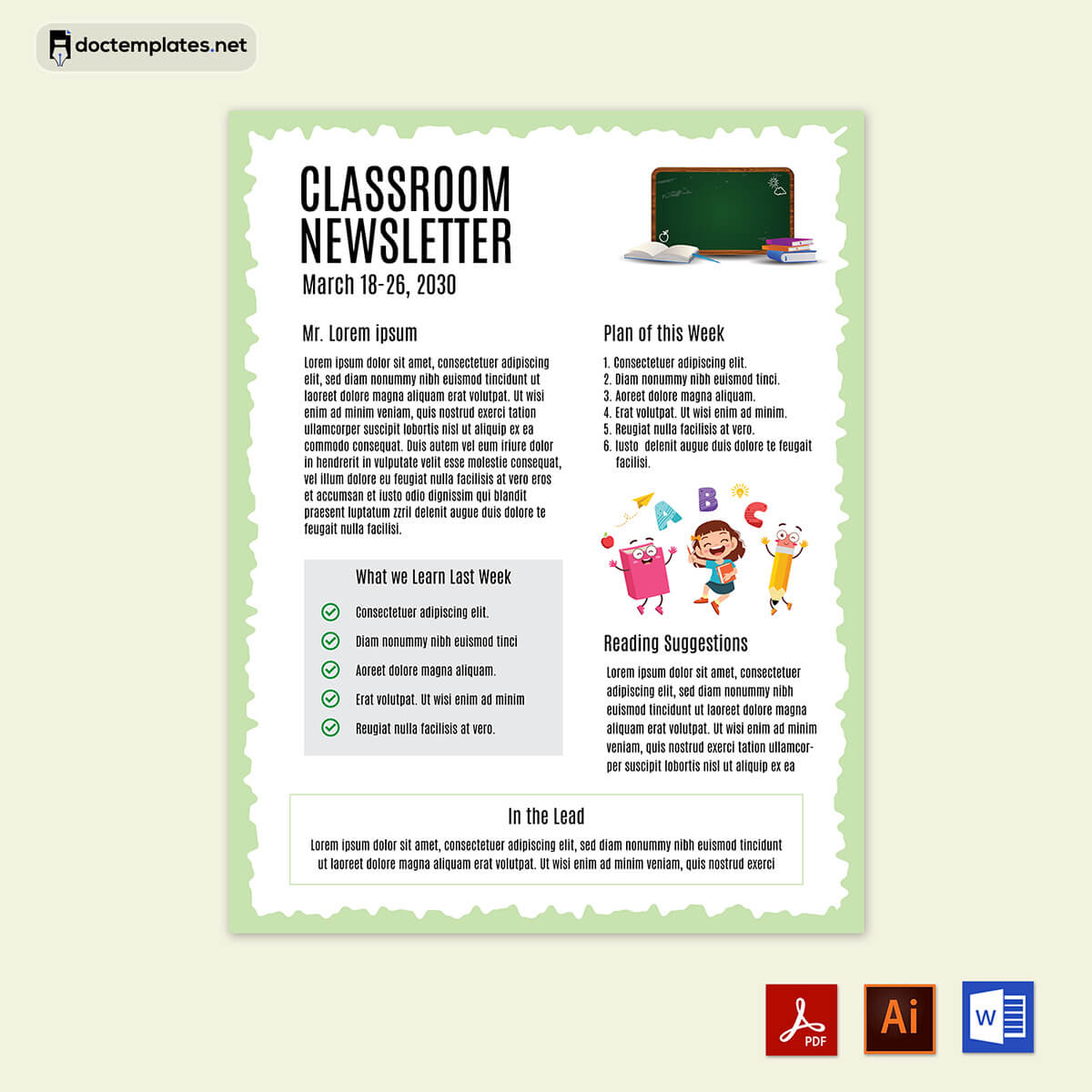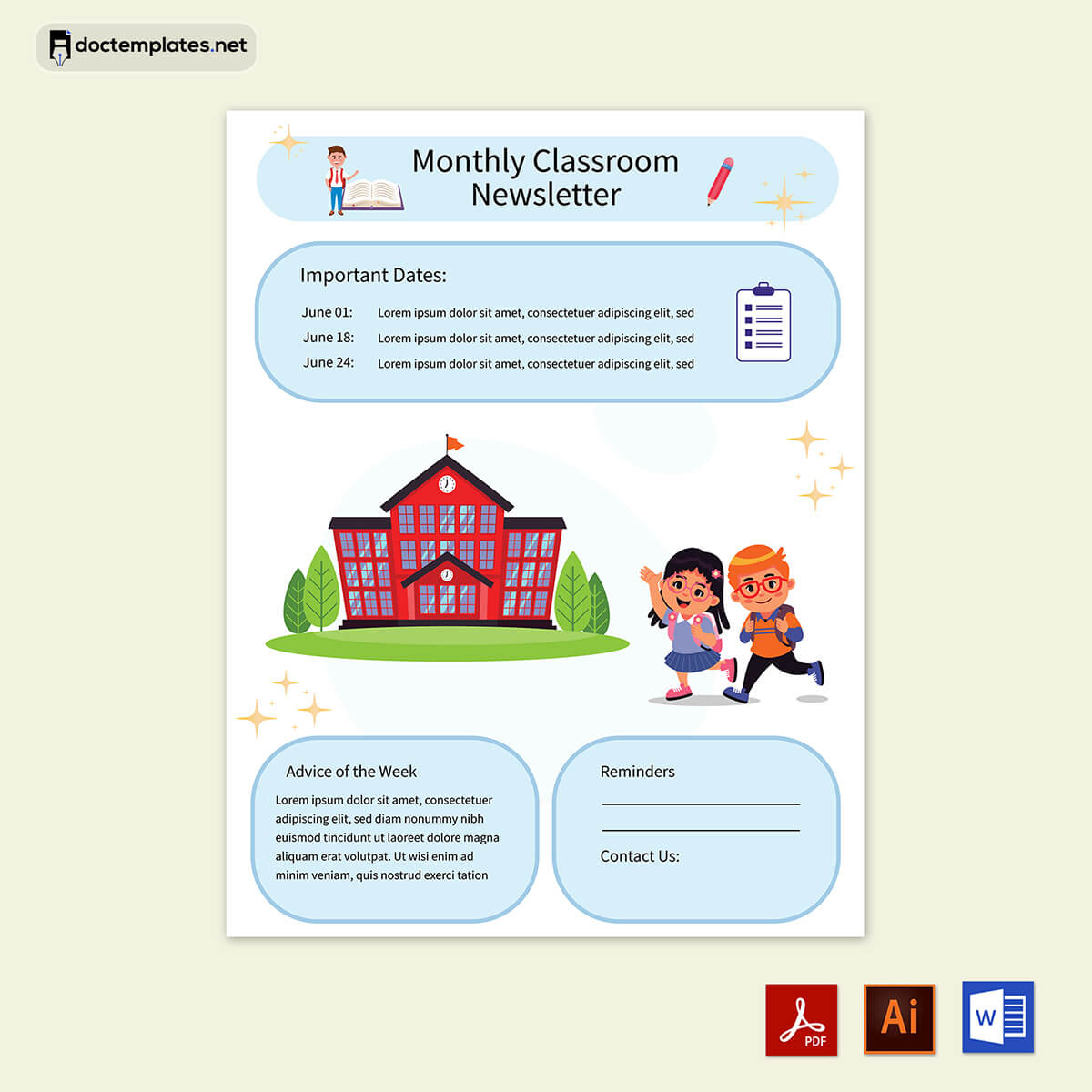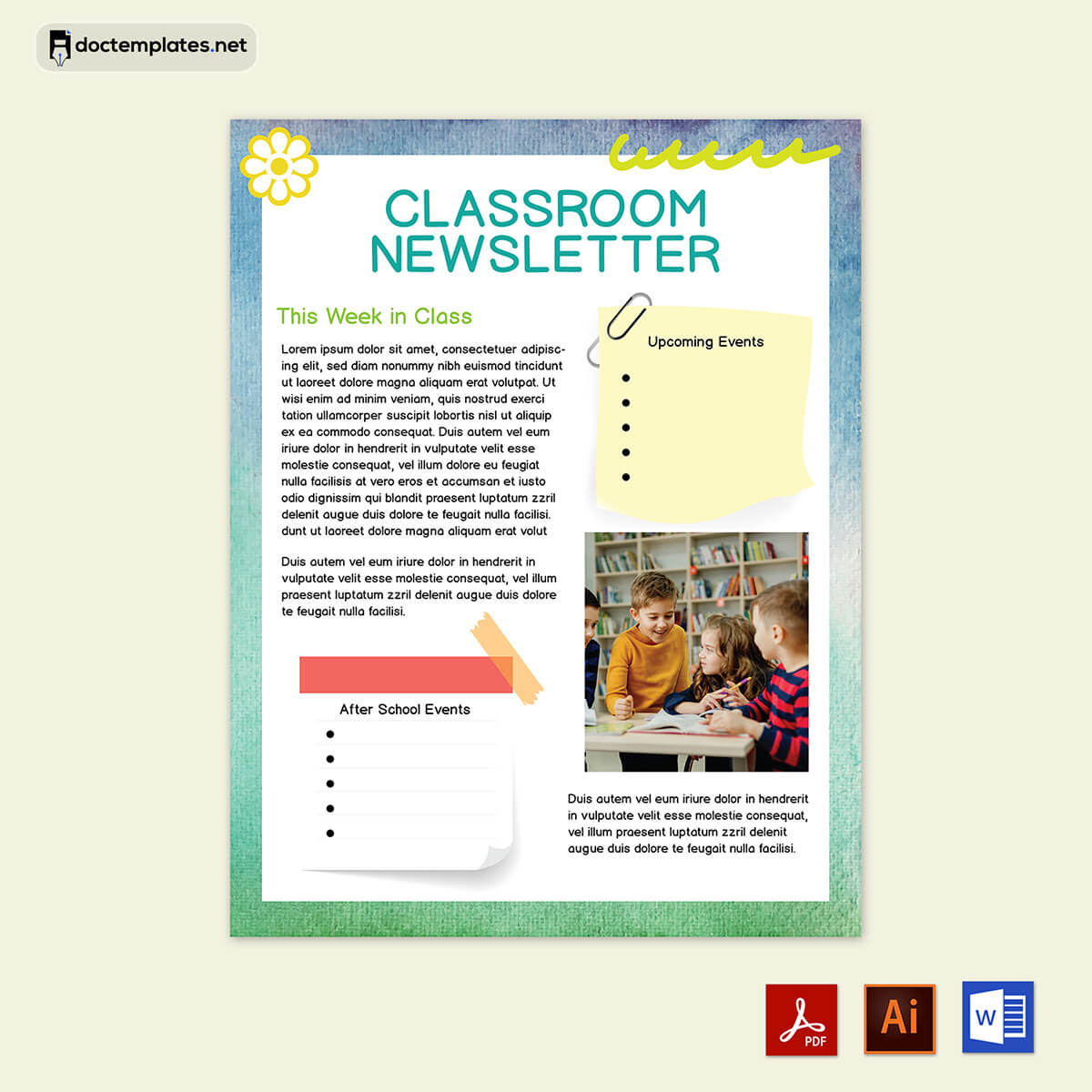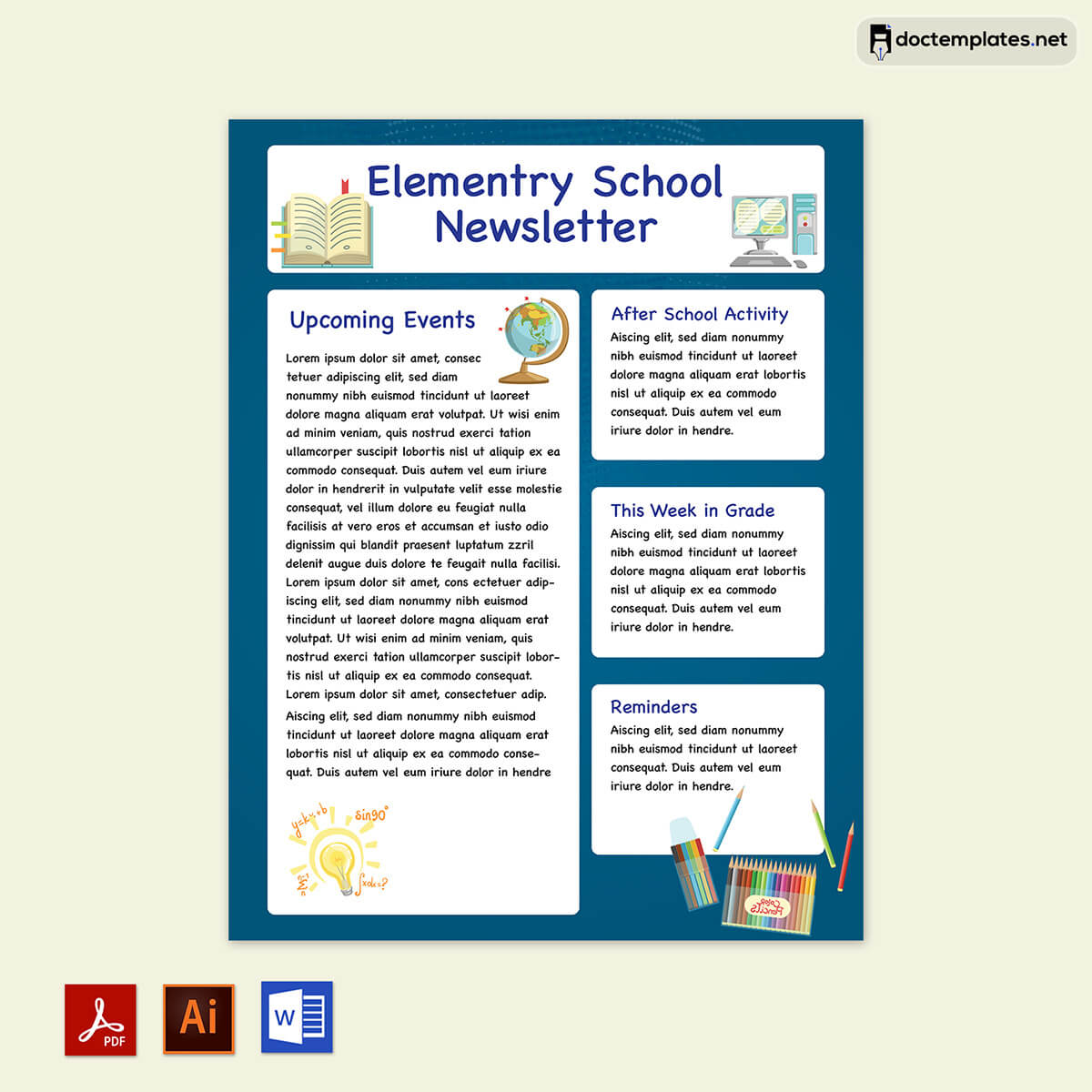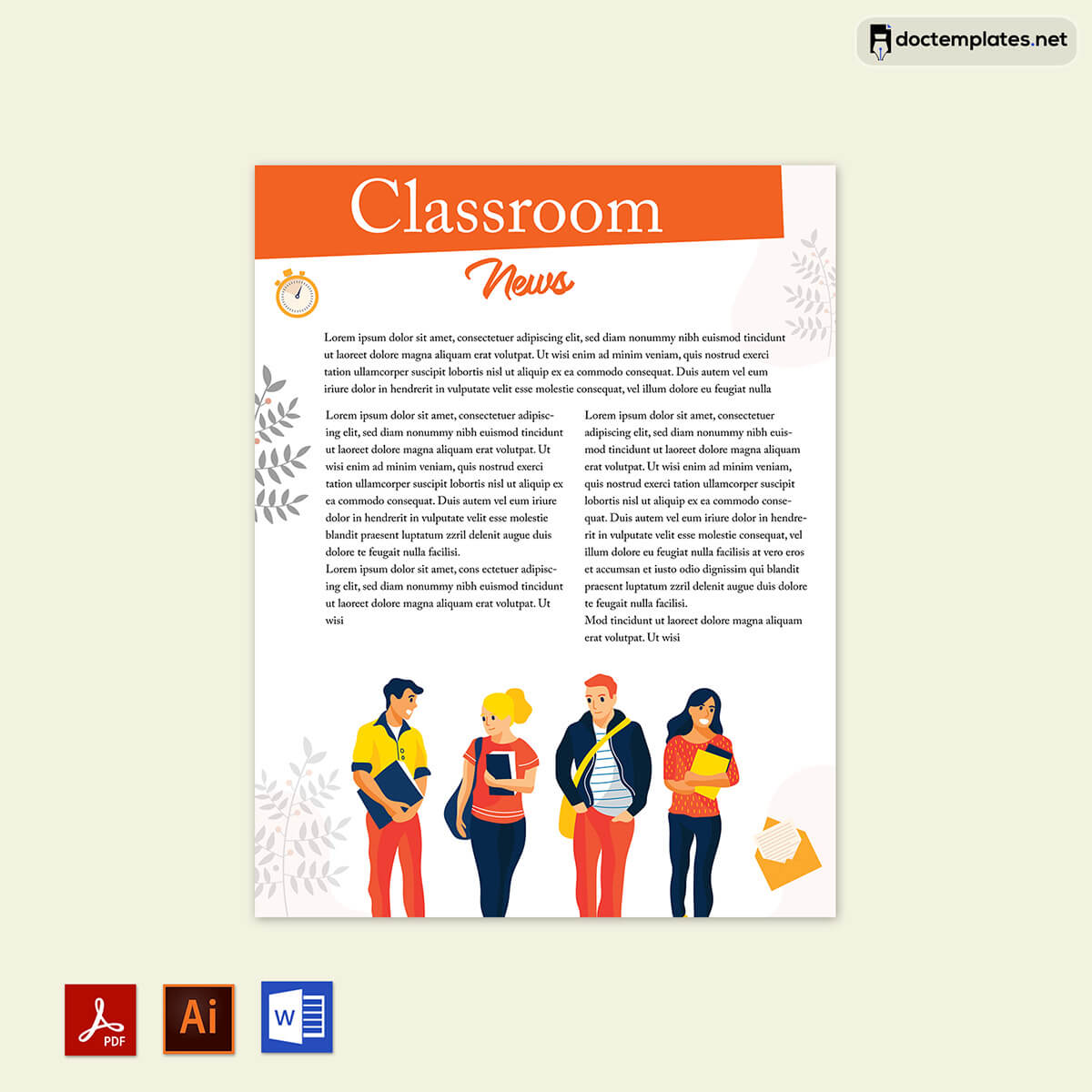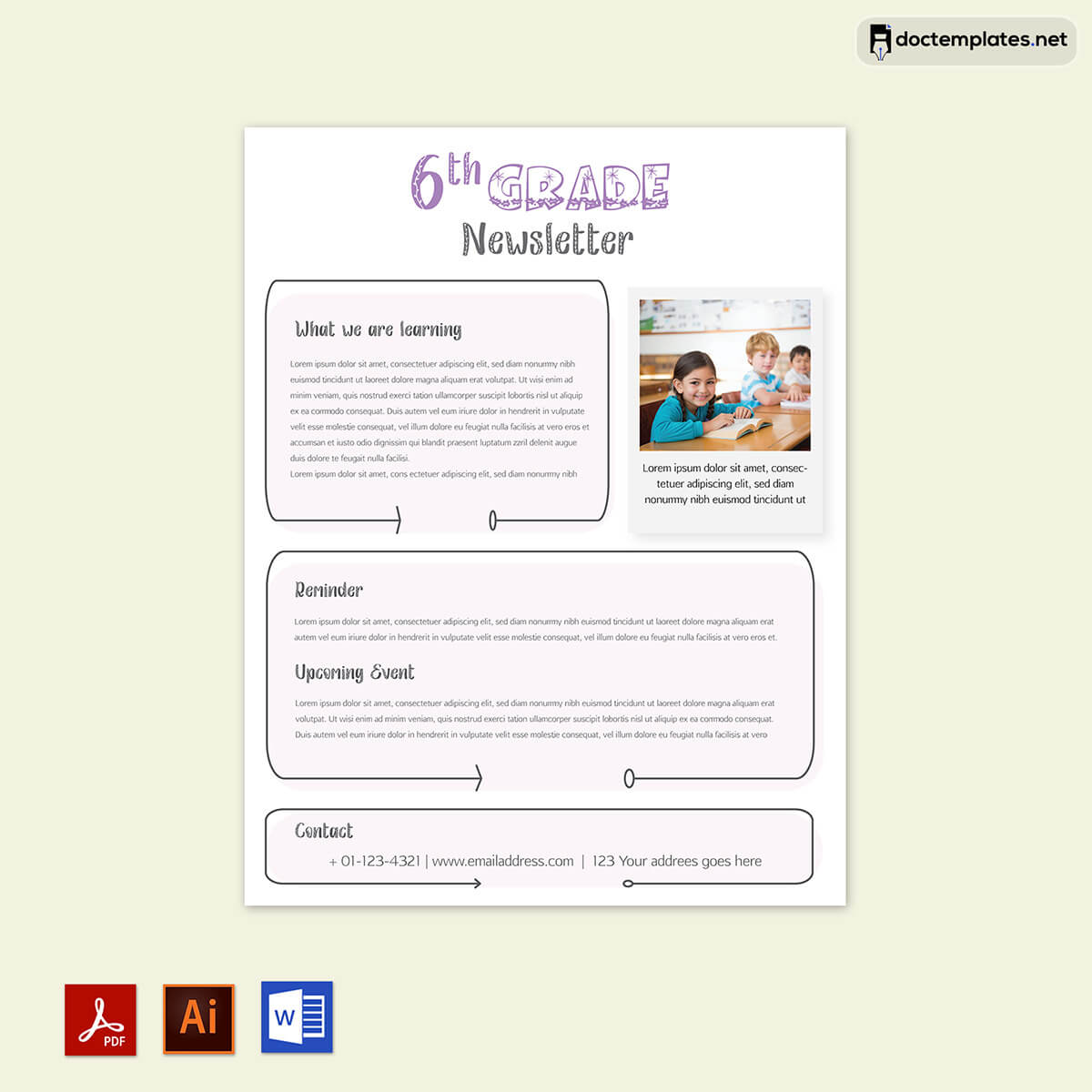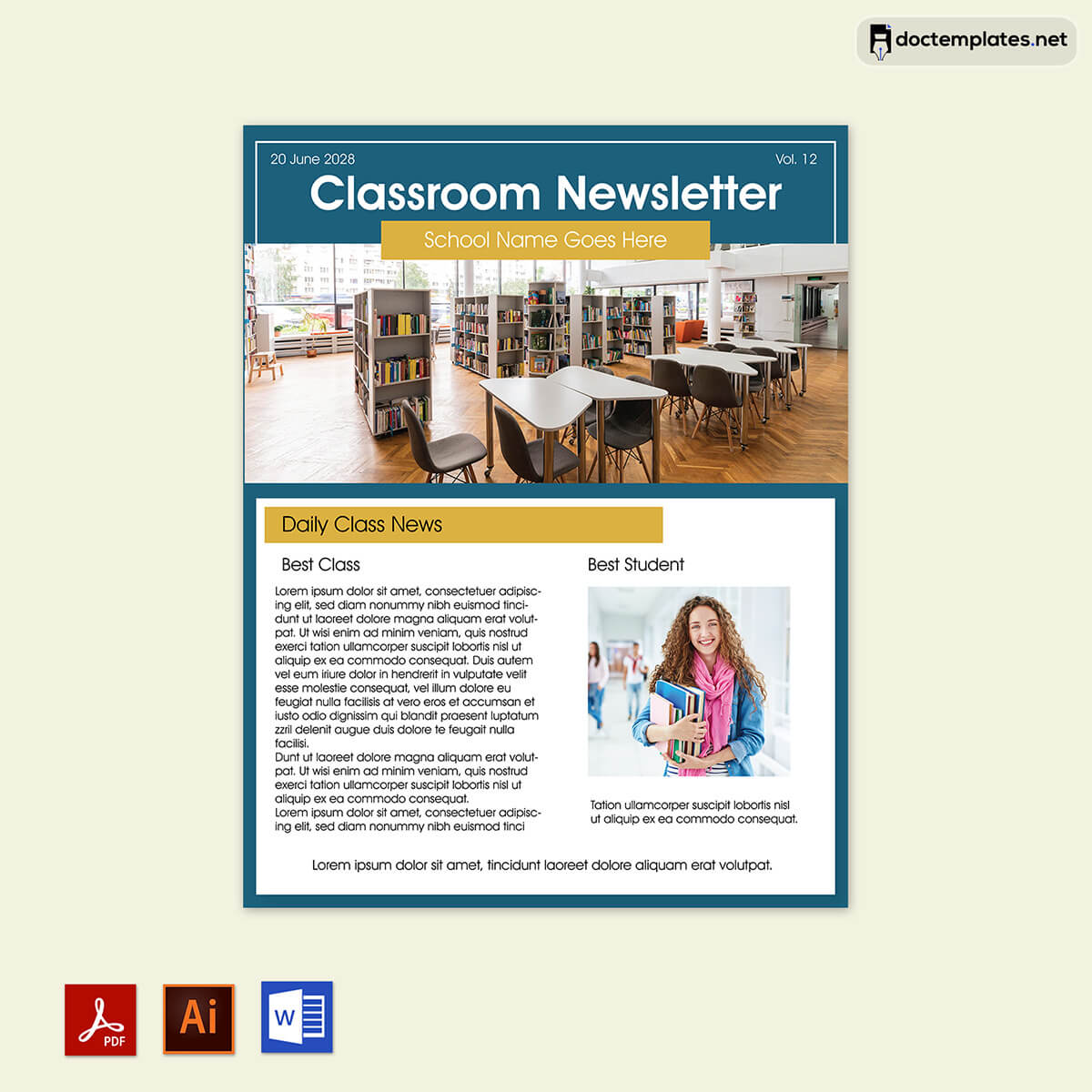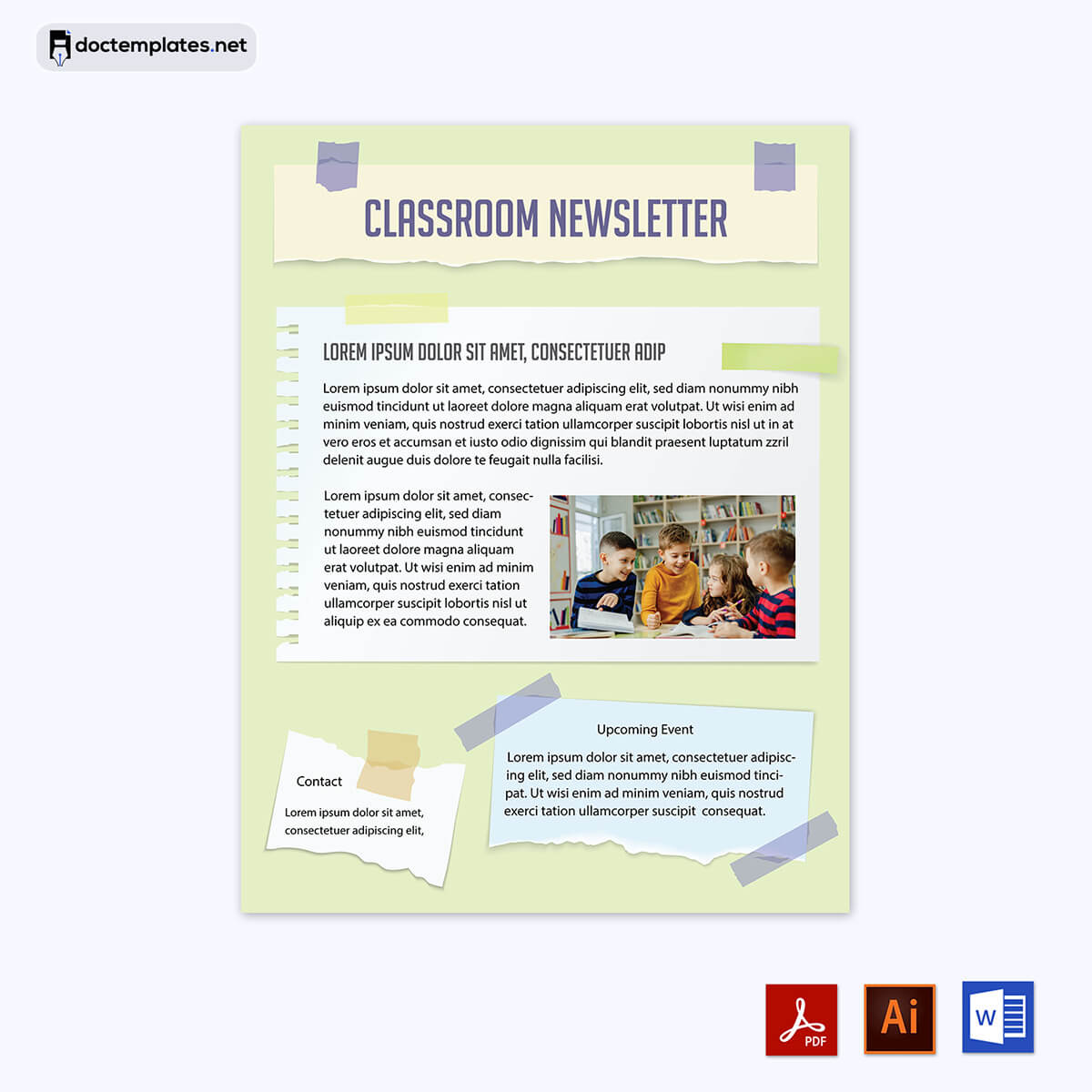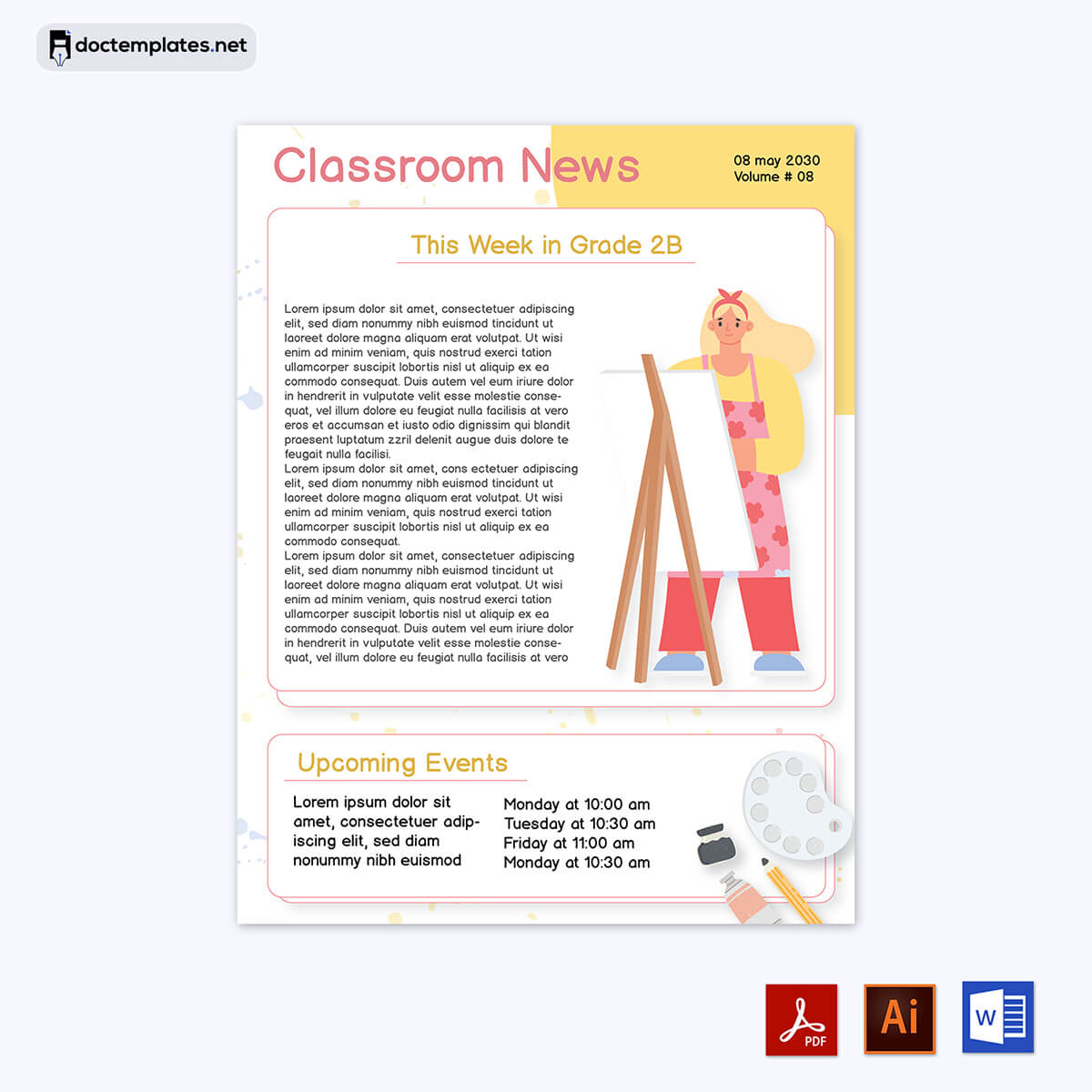A classroom newsletter is a document that a teacher creates and distributes to students and their parents or guardians to keep them informed about what is happening in the classroom.
It usually includes important announcements, upcoming events, recent activities, student accomplishments, and significant dates. Classroom newsletters may also have tips for parents on how to support their child’s learning at home. They may also feature articles or other content related to the subject matter studied in the classroom.
This article will guide teachers in preparing a classroom newsletter to keep the students and parents streamlined about future events. It will also discuss the purpose of making a classroom newsletter, the information to include, and various effective practices. Free downloadable classroom newsletter templates are also provided to help you guide through the writing process.
Classroom NewsletterTemplates
Following are the classroom newsletter templates that you can download for free:
Why Teachers Should Have Classroom Newsletter
A salient advantage of classroom newsletters is effective communication among teachers, students, and parents. Furthermore, having classroom newsletters gives parents added benefits.
Some of the advantages include the following:
- Classroom newsletters help parents stay informed about classroom matters and what their child is learning. This information makes them involved in their children’s education and more connected to the classroom community.
- They create a sense of community within the classroom by keeping everyone informed and connected. This can be especially beneficial for students struggling academically or socially, as it can help them feel more connected to their classmates and teacher.
- Classroom newsletters provide parents with regular updates on their child’s academic progress by specifying grades, accomplishments, and areas that require improvement. As a result, parents can understand how their child is performing, allowing them to discuss any concerns they may have with the teacher.
- They can encourage parents to get involved in the classroom or school community to foster a partnership between the school and parents. It also makes parents more engaged in their children’s education.
- Classroom newsletters have articles, activities, and other resources related to the subject matter studied in the classroom. Therefore, they keep teachers organized as they know exactly what they should teach in the following weeks or months.
How to Plan Classroom Newsletter: Step-by-Step Guide
Before you start preparing a classroom newsletter, you should determine its purpose. Do you want to keep parents informed about classroom affairs, provide updates on student progress, or both?
After determining the purpose, follow the step-by-step guide below to prepare a compelling classroom newsletter:
Step 1: Choose a template
A template has a pre-made structure that you can implement as a starting point for creating a classroom newsletter. It typically includes placeholders for the elements you will add to the newsletter, such as headings, text, images, and graphics. Choose a template from this website to help you create a professional-looking classroom newsletter.
You can fill in the placeholders with your content rather than starting from scratch, allowing you to create your newsletter quickly and easily. Ensure you choose a template with sections and layout elements that will enable you to easily add the information you want to include in the newsletter.
Step 2: Choose a layout
Most templates are bound to have numerous placeholders for various sets of information. You can consider having a simple one-page newsletter with sections such as “Classroom Update” or “Student Spotlight.” The templates have different color schemes and layout designs, so make sure you choose a colorful layout that allows maximum white space. Since you want to convey information while staying upbeat, your preferred format must be alluring.
Pro tip: Since you want to keep the readers engaged, avoid dark color schemes and negative news. This promotes a positive outlook on the learning process.
Step 3: Name the classroom newsletter
At the top of the newsletter, provide a descriptive name that conveys the newsletter subject and for whom it is intended. Consider including the name of the classroom or the topic you are teaching that week or month. The title should match the tone of the newsletter. A more formal title is appropriate if the newsletter is informative and severe. However, a more playful title may be ideal if the intent is to be lighthearted and fun.
Step 4: Design the logo and front page
The front page should be compelling enough to grab the reader’s attention. Therefore, you should devote sufficient time to designing the front page. Apart from the newsletter’s name, the front page should include a logo and highlight important information in the newsletter. The logo should be simple, easy to recognize, and consistent with the newsletter’s overall design.
You can use simple school-related graphics or images such as books, pencils, pens, or crayons. If the newsletter contains multiple pages, you can add a brief table of contents below the title. For a single-page newsletter, use headings and subheadings to organize the content to make it easier to read and help readers find the information they are looking for more efficiently.
Pro tip: Remember to keep the design consistent with the front page and use the logo as a header or footer.
Step 5: Design the inside pages
When designing the inside pages, use only a few fonts, colors, or other design elements that can make the newsletter look cluttered and confusing. The inside pages contain the bulk of the information about the newsletter.
Add the following details: updates on what the students have been learning; upcoming events or assignments; student progress or achievements; tips for parents on how to support their children’s learning at home; articles and resources related to subjects being studied in the classroom; announcements or updates from the school or school district; calendar of events; student work or photos from the classroom; and helpful websites or resources for students and parents.
Use text boxes and borders to highlight important information, draw the readers’ attention to important points, and make the newsletter more visually appealing. Use bulleted or numbered lists to present information.
Pro tip: The page layout may vary from one page to another. The text and images should be in a manner that creates harmony.
Step 6: Plan the content
At the beginning of the school year, gather information for the newsletter by asking parents, students, and fellow teachers what they would like to be included. Usual requests may include a student photo gallery, upcoming fundraisers and field trips, and school board policy updates. Organize this information into sections, preferably in a color code. You can also include permission slips and surveys for parents and guardians.
You may offer inspiration by placing quotes from prominent people on noticeable parts of the newsletter. The last page can include frequently asked questions (FAQs) to inform parents of upcoming events. You can also include current local and international events depending on the age group of the students.
A “Week at a Glance” section may include assignments, upcoming birthdays, field trips, or holidays. You may post classroom rules the students should follow during the school term. A picture of the class’s best-performing student may be included to motivate the class. You can also incorporate a “Recap” section of what the students accomplished, learned, or experimented with the previous week. Finally, you can leave a blank space for parents and students to provide feedback.
Step 7: Build a database of material
Building a material database for your classroom newsletter will give you a wealth of resources when planning and creating the newsletter. A material database makes the newsletter creation process more efficient and can ensure that you can include various exciting and valuable content in each issue. You can take photos of class projects and field trips and document class discussions and parent-teacher meetings, as these illustrate the learning process.
Step 8: Choose a distribution method
The most common distribution method you can use is printing the newsletters and sending them home with students at the end of the week or month. Opt for an easily accessible distribution method for parents, such as email or an online platform. If the newsletter is meant for students, you might select a method accessible to them.
For example:
Posting a digital version on the school website or learning management system.
If you have little time to devote to newsletter distribution, you can email them directly to the parents regularly.
Step 9: Ask parents for feedback
After you have distributed the newsletter several times, seek input from students and parents to identify if you can improve further. You might send a survey, host a focus group or ask for feedback in person or via email. If parents feel that their feedback is valued and their input is being taken into account, they may be more likely to read the newsletter in the future.
You can see what parents liked about the newsletter and what they thought could be improved to help you make the newsletter more useful, relevant, and enjoyable for parents.
You can encourage parents to reply to your newsletter in a “Letter to Editor” format, mainly if it includes news on the learning process. Consider having a “Parents Voices” section to collect feedback from parents.
Tips for Creating an Effective Classroom Newsletter
If you want parents and guardians to continue reading your classroom newsletters, there are a few considerations you need to make.
The following are some tips you can consider to help you create a captivating classroom newsletter:
Involve the students in the production
Encourage your students to participate in the production of the newsletter. They might contribute articles, create graphics or images, help with design, or assist with editing and proofreading. By contributing to the newsletter, students are more likely to share it with their parents.
For the design aspect, you can hold a monthly or weekly contest and let one student be a guest designer. They may also guide the next designer on how to handle the process. You can include the student’s photo followed by text like Designed by [Student Name], at the back of the newsletter.
Make it visually appealing
A visually appealing newsletter will likely capture readers’ attention and interest them. Use images, graphics, and other visual elements to reinforce the information in the newsletter and make it more likely to be understood and referenced. Ensure the design incorporates white space to separate different sections or types of information and prevent the newsletter from looking chaotic.
Do not use the same font size for all the text, incorporate too many images, or include excessive information on a single page. A single-page newsletter with different sections is acceptable. The design of your newsletter depends on the amount of information and images you want to include.
Include actionable content
Include tips for parents on supporting their child’s learning at home, resources or activities that students can use, items they need to bring, or information about upcoming events in which parents can participate. You may also incorporate sight words, vocabulary words, study topics, or a short game such as a crossword puzzle or sudoku.
The newsletter will be more valuable and relevant to parents by providing actionable content, increasing its value and appeal. You may provide a link to the school website for newsletters sent by email.
Keep your content scannable
Use bullet points or numbered lists to present information. This will allow the readers to scan the content more quickly. The bold or italicized text highlights essential features and draws the readers’ attention to action points. Increase the margins and space around images to add white space. You may also decrease the font size to achieve the same.
Make your newsletter inclusive
Issue translations in languages other than English because some of your readers may not be native English speakers. When translating the text, avoid online translators that may change the tone of the message. To encourage students to tell their parents about the newsletter content, read it with your students in class. Consider the needs of all community members when choosing content and design elements.
For example, if you have students with visual impairments, you might consider using a larger font or higher contrast colors to make the newsletter more accessible. You can also add articles or resources written by or about people from different cultural or socio-economic backgrounds or highlight different perspectives on a given topic. To help illiterate or impaired parents engage with the newsletter, add a scannable QR code that links to a video recording of the content.
Add fresh content
Incorporate new ideas and experiment with new types of content to keep the newsletter fresh and exciting. If the newsletter always contains the same kinds of information or covers the same topics, readers may become less interested in reading it. You can highlight student achievements and activities or feature guest writers or experts to ensure that the newsletter is relevant and engaging.
Add real photos
Add high-quality images of students, teachers, and other school community members to the newsletter to make it more personal and engaging. You may also include pictures of student projects or field trips. However, ensure to get permission from anyone featured in the photos and be mindful of privacy concerns.
Bottom Line
Classroom newsletters communicate essential information to students and parents, such as upcoming events and important dates. They also share classroom news, such as student achievements and grades. Classroom newsletters can also include resources and activities to assist students in learning at home and foster a sense of togetherness in the classroom.
As a teacher, you likely spend a lot of time each month creating a classroom newsletter. Creating newsletters can be a time-consuming task. A template can provide a basic structure and layout for the newsletter, which can save you time and help you create a professional-looking publication. By following the guidelines in this article, you can create a classroom newsletter that is engaging, informative, and effective.
